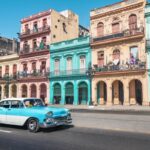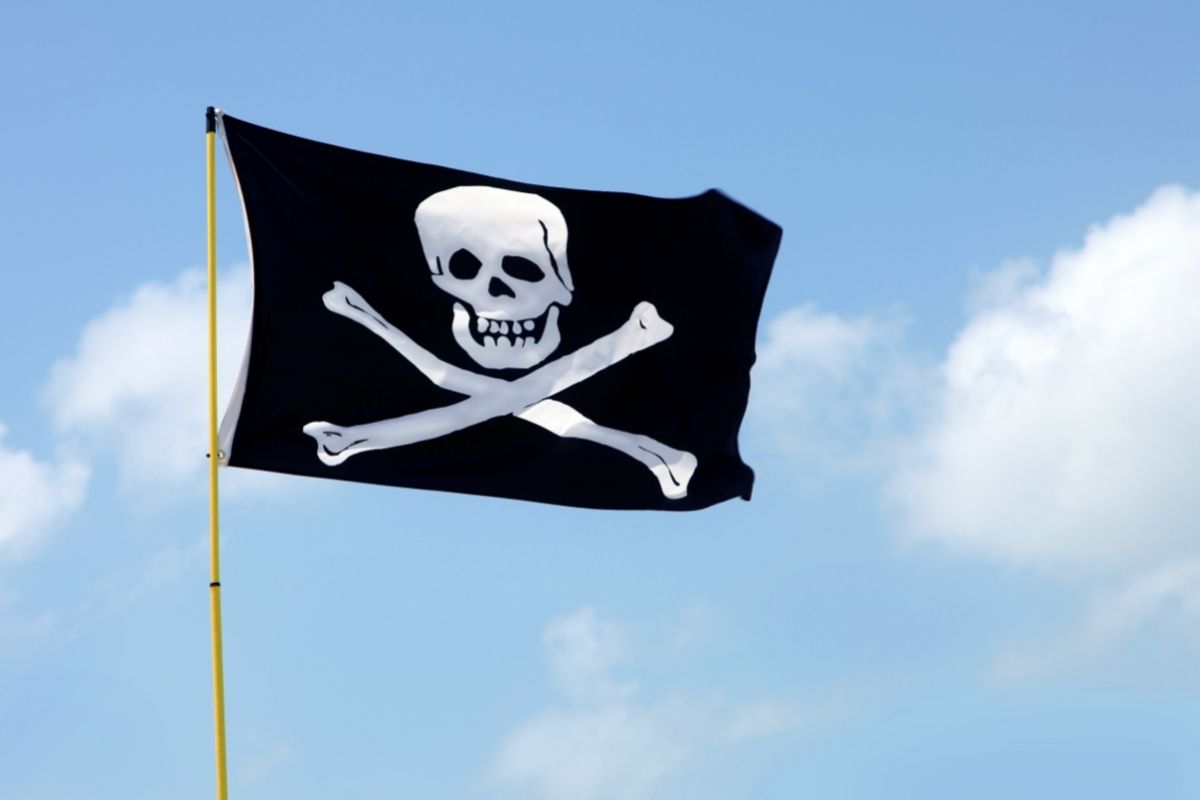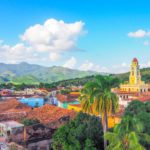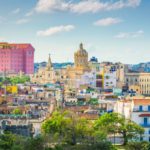A hub of culture and history, Santiago de Cuba is the second-largest city in Cuba.
Located on the southeast of the island, a rich cultural heritage has made Santiago de Cuba a popular spot with tourists from all over the world.
Santiago de Cuba was founded in 1515 by Diego Velázquez de Cuéllar, but was very different from the city we know today.
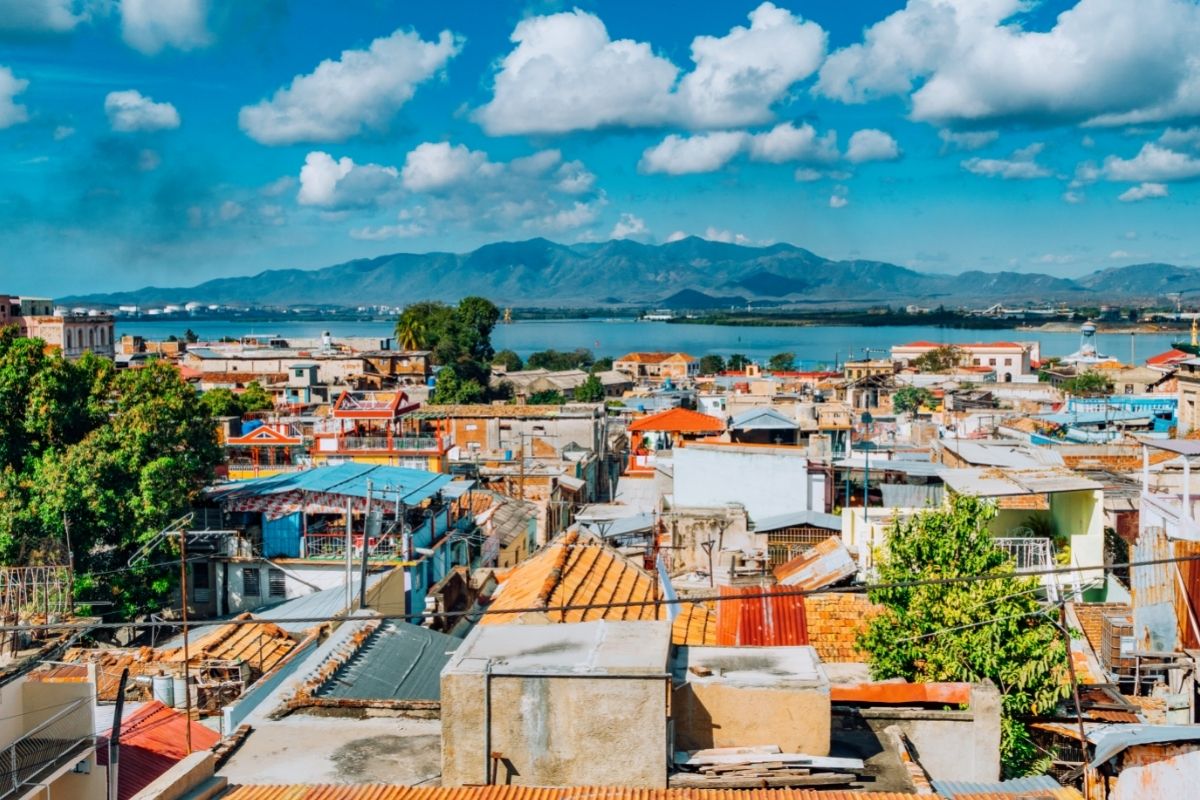
Over the years, Santiago has been sacked by pirates, experienced several fires, and was briefly the capital city.
At the end of the island, strong links to Haiti and the Dominican Republic led to the eclectic cultural diversity of Santiago, and a unique atmosphere.
Santiago is more than just a thriving cultural center — it’s also at the revolutionary heart of Cuba.
The 1953 Cuban Revolution began in Santiago, and victory was declared in 1959 from the Santiago de Cuba’s city hall balcony.
The city combines some of Cuba’s most renowned traits, creating a vibrant center that all visitors to the island should see.
What To Do In Santiago
Many visitors to Santiago de Cuba are entranced by the monuments to history that are found across the streets.
Santiago celebrates its role in the history of the country. Take a tour of Castillo de San Pedro de la Roca, a coastal fortress and UNESCO heritage site.
Built to protect against pirate attacks, San Pedro de la Roca castle now stands as an icon of Spanish-American architecture, and a monument to the turbulent history of Santiago.
To see the role that Santiago played in the Cuban Revolution, visit the Cuartel Moncada.
From the outside, the exceptional art deco building shows scars of the revolution, with bullet holes forming an unusual decoration.
Inside is one of Cuba’s best museums, including a touching tribute to those who were lost to the fighting.
For another poignant dose of history, head to the Cementerio de Santa Ifigenia.
The Santiago cemetery is the resting place of several revered Cubans. It also hosts monuments to those who have died in defense of Cuba.
But you don’t have to visit any particular attractions to get a sense of history in Santiago de Cuba.
Wander around the town and you can spot old buildings tucked alongside modern facades.
The unusual, changeable, and often violent history of Santiago is integral to the presence of the city.
Make sure to wander past Plaza de la Revolucion, to see more.
If you enjoy stretching your legs, Santiago de Cuba is located near several attractive walking areas.
To the east of Santiago de Cuba is Parque Nacoinal de la Gran Piedra. The sweeping mountains are the most accessible of Cuba’s peaks.
Climb to the top of La Gran Piedra, otherwise known as The Big Rock, and look out onto panoramic vistas.
Back in the city itself, Parque Cespedes epitomizes romantic Cuba.
The colonial architecture that surrounds the park offers a lot to take in, including the historic Catedral de Nuestra Señora de la Asunción.
Or see the dockside Parque Alameda, just below the Tivoli French quarter.
If you’re interested in discovering more of Santiago de Cuba’s cultural history, you have a wealth of museums to choose from.
Museo de Ambiente Histórica Cubano, sometimes referred to as the Diego Velázquez museum, is the oldest surviving house in Cuba, displaying furnishing and decorations from across the centuries.
Museo Municipal Emilio Bacardi Moreau was founded by the rum magnate/war hero, with a collection that offers a fascinating insight into Cuban history.
Or discover the revolution at Museo de la Lucha Clandestina. You can’t miss its bright yellow exterior.
Music is the pulse of Santiago de Cuba. Head to the famous Casa de la Trova, which celebrates the traditional music of Cuba.
Casa de las Tradiciones combines colorful artworks with a diverse musical experience, tucked away in Tivoli.
But music permeates the streets of Santiago de Cuba. You can catch incredible music most nights across the city.
Over summer, Santiago de Cuba transforms into a carnival town.
The Carnival Festival and Festival del Caribe bring salsa, music, and costumes to the streets of Santiago.
You can’t help but get caught up in the atmosphere that soaks the historic walkways.
Conga, salsa, and rumba all originated in Santiago, and with the festival in swing, you can understand why the residents felt so compelled to dance.
The diverse culture of Santiago, combined with a complex history, has made the city a place to appeal to all visitors.
Whether you want to soak up the atmosphere as you enjoy a rum in the place where Bacardi was created, or see how many of the museums you can fit into your schedule.
Santiago de Cuba has something for everyone. If you get tired of the hustle and bustle, head to the greater Santiago area and explore the mountains.
We’re sure in no time at all, the musical call of Santiago de Cuba will have you longing for the city again.
If you enjoyed this article, you might enjoy our post on ‘The Traveler’s Guide To Currency In Cuba‘.
- What Is The Largest Island In Cuba? - September 19, 2022
- Havana – Why Is It Cuba’s Most Exciting City? - September 19, 2022
- Cheapest Time To Visit Cuba (Ultimate Guide) - September 19, 2022

